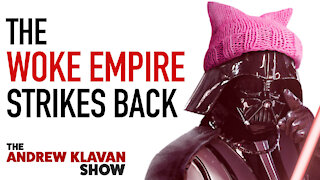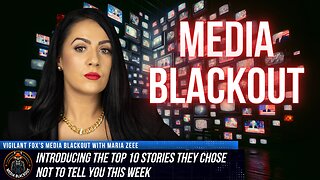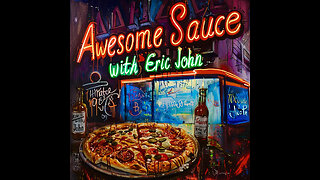SDWPS #3 - Empire Strikes Back - Middle Trilogy Movie
Link to Final Article:
https://www.hollywoodintoto.com/ultimate-empire-strikes-back-review/
Transcript:
The Empire Strikes Back is known as one of the best sequels of all time and the peak of the Star Wars franchise, in terms of quality—but what does that mean, exactly?
Empire isn’t just a sequel, it’s the second chapter in a trilogy. Die Hard 2 doesn’t aspire to move John McClane towards a climactic third movie—it aspires to do the same thing as the first film, only “different." Aliens, another 80s-era sequel, moves Ripley’s character forward, but is also a self-contained story with a clear ending (and Alien 3 was widely criticized for invalidating it). Empire, on the other hand, is clearly a middle-act movie that ends with plenty unresolved. Episode V is also the original trilogy film with the least noticeable changes in the Special Edition. Its story, performances, and overall presentation are legendarily near-perfect just the way they are. Clearly, just because a film is the second part in a multi-film series doesn’t mean they can all be measured against the same criteria. It’s not just the style that’s different—it’s the intent.
Like my piece on the first film, I’m going to try and keep this from turning into a blow-by-blow recount of the plot. For clarity’s sake, I will still be sticking to chronological order.
Thus, we start with the opening crawl.
It’s generally agreed that audiences don’t like text preambles, and generally I’m inclined to agree. However, of all the examples to exist in cinema, those in Star Wars seem to escape universal condemnation, and this in itself is an interesting anomaly. As CinemaSins might note, it is “reading” (*ding*)—but not very much, and you're don’t have to spend precious mental energy on it if you don’t really want to (I always thought of this as meant to be seat-hunting time for the late-comers, while the score sets the stage for those already settled).
It’s also worth noting that, with few exceptions, text preambles in film are just poorly written, and even more poorly animated on screen (with constant fading in and out), leading to an incredibly flat and confusing viewing experience. The crawl in Star Wars, by contrast, is easy to follow, includes interesting visual movement, and is usually fun to read (Empire’s especially). It reinforces the story to follow, rather than serving as a lazy replacement for scenes that ought to have been included in the first place.
It’s also notable that Lucas was fined by the DGA for not including more reading—namely credits—here at the beginning. Once the crawl is over, we switch directly to visual storytelling, with no concessions for anything else. Personally, I find it far easier to tolerate reading in one big chunk while listening to John William’s fantastic opening theme, rather than having the mystery of the probe droid deployment being interrupted by the name of some producer in the lower left corner.
Empire’s opening shot isn’t quite as famous as that for A New Hope, but it’s just as carefully crafted. Instead of dropping us straight into a chase scene, Empire gives us a tilt down onto a Star Destroyer on the prowl. The feeling is one not of intimidation, but mystery. A cluster of probes are dropped, and we follow the last down to the ice planet. Emerging from the crater, we meet our first character—the bug-like Imperial Probe Droid, which immediately floats off into the freezing wasteland. It’s a masterful, understated scene that uses the movement of its subject to motivate our movement down to the surface, and then as a transition to introducing the protagonist. Sure, we could have just started with the overhead shot of Luke on his Tauntaun and gone straight to his close-up—but where’s the fun in that?
This intro also tells us things about Luke’s mindset that simply zooming on his red-nosed face wouldn't. When he raises his binoculars to his face, we know what he’s looking for. When he sees the meteor hit the ground, we know why he wants to investigate it, even though we never really learn whether it was another probe or not. Speaking of Luke, it takes Empire almost exactly three minutes to introduce our hero, including the opening crawl—compared to the first film’s seventeen minutes, not bad. In fact, Empire introduces all three main characters and establishes most of what we need to know about their current relationships within seven minutes, which is rather impressive. Some of this is clearly enabled by the fact that it’s a middle-act movie, as I mentioned before, picking up where the first film left off. However, because A New Hope wraps things up as cleanly as it does, it gives Empire’s first act room to evolve those dynamics a couple of steps forwards without losing the audience.
Luke has gone from farm boy to squadron leader, and is introduced riding his faithful dino-goat in a blizzard. He has a short conversation with Han, who informs us he’s heading back to base (so we know where he is when he g...
-
 1:18:52
1:18:52
Out Of Body Travel to God Realization - VARDANKAR
2 years agoStar Wars The Empire Strikes Back Review Spiritual Insights
71 -
 1:01:33
1:01:33
Andrew Klavan
2 years agoThe Woke Empire Strikes Back | Ep. 1039
7058 -
 28:06
28:06
Twins Pod
2 years agoGovernor Cuomo Strikes Back!
18.4K246 -
 21:39
21:39
Frequency and Sound
2 years ago $0.03 earnedOld Fart Strikes Back....
781 -
 LIVE
LIVE
MissesMaam
2 hours agoGrinding Achievement + Perfection | Stardew Valley 💚✨ pt. 34
506 watching -
 LIVE
LIVE
Vigilant News Network
8 hours agoMedia Blackout: 10 News Stories They Chose Not to Tell You - Episode 25
2,626 watching -
 LIVE
LIVE
EricJohnPizzaArtist
1 hour agoAwesome Sauce with Eric John
525 watching -
 3:00:20
3:00:20
vivafrei
13 hours agoEp. 213: SHUTTING DOWN ALEX JONES? Biden Regime War in FULL FORCE! Viva & Barnes Live!
99K163 -
 1:08:34
1:08:34
The Late Kick with Josh Pate
4 hours agoLate Kick Live Ep 518: CFB’s Wildest Era | Biggest 2024 ?s | Impact Freshmen | Bold Predictions
5.88K -
 12:00
12:00
Dr. Eric Berg
1 day agoWhat Exercise Burns the Most Calories?
27.3K20